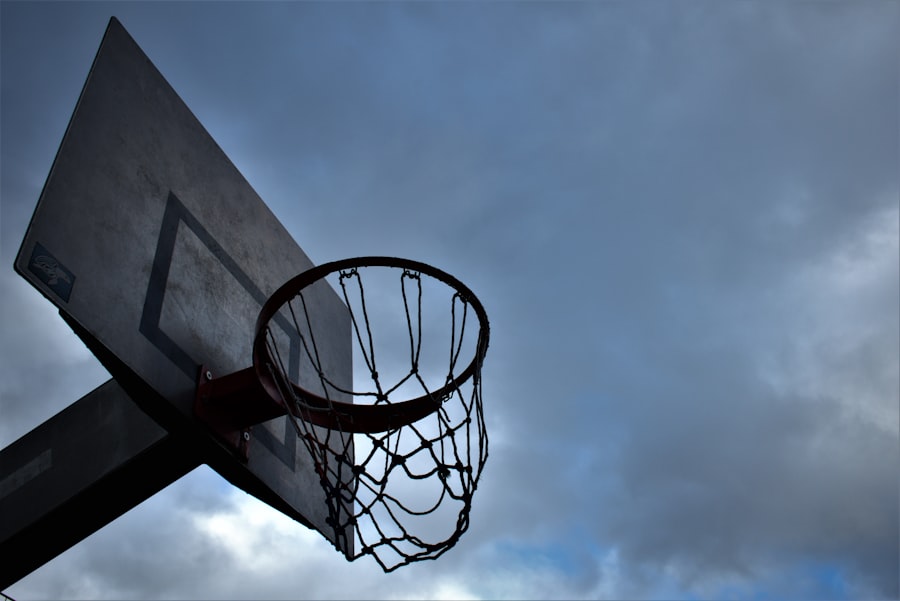Download links
How to install Mastering the Art of Basketball: Tips for Success APK?
1. Tap the downloaded Mastering the Art of Basketball: Tips for Success APK file.
2. Touch install.
3. Follow the steps on the screen.
Description
Dribbling is one of the most essential skills in basketball, serving as the primary means of ball movement on the court. At its core, dribbling involves bouncing the ball while moving, allowing players to navigate through defenders and create scoring opportunities. Mastering the fundamentals of dribbling requires a combination of hand-eye coordination, body control, and an understanding of defensive positioning.
Players must learn to use both hands effectively, as this versatility can make them unpredictable and difficult to guard. For instance, a player who can dribble proficiently with both hands can execute crossovers, behind-the-back moves, and spin dribbles with ease, keeping defenders off balance. Ball handling extends beyond mere dribbling; it encompasses a player’s ability to control the ball in various situations.
This includes maintaining possession under pressure, executing quick changes of direction, and protecting the ball from defenders. Effective ball handlers often employ a low dribble to keep the ball closer to their body, making it harder for opponents to steal. Additionally, using body fakes and head fakes can create space and open up passing lanes.
Players like Kyrie Irving exemplify exceptional ball handling skills, utilizing a combination of speed, agility, and creativity to navigate through defenses. By practicing drills that focus on both stationary and moving ball handling, players can develop the necessary skills to become more effective on the court.
Key Takeaways
- Dribbling and ball handling are essential fundamentals for any basketball player, requiring practice and coordination.
- Shooting techniques and strategies involve proper form, footwork, and focus on the basket.
- Defensive skills and strategies include positioning, footwork, and anticipation to disrupt the opponent’s offense.
- Mastering passing and court vision involves awareness of teammates’ positions and the ability to make accurate and timely passes.
- Physical conditioning and stamina building are crucial for endurance and performance on the basketball court.
Shooting Techniques and Strategies
Mastering the Fundamentals of Shooting
A successful shot begins with a solid foundation. Players should start with a balanced stance, feet shoulder-width apart, knees slightly bent, and weight distributed evenly. The shooting hand should be positioned under the ball, while the guide hand stabilizes it from the side. This grip allows for better control and accuracy when releasing the shot. The follow-through is equally crucial, as players should extend their shooting arm fully and snap their wrist to ensure a smooth release.
Shot Selection and Strategy
Beyond technique, shooting strategies play a vital role in a player’s effectiveness on the court. Understanding shot selection is crucial, as players must recognize when to take a shot versus when to pass or drive to the basket. For instance, a player might find themselves open beyond the three-point line but should consider whether they have a higher percentage shot available closer to the basket.
Evolving Shooting Strategies in Modern Basketball
Players should be aware of their shooting range and work on developing their ability to shoot off the dribble or in catch-and-shoot situations. The likes of Stephen Curry have revolutionized shooting in basketball by demonstrating that effective shooting extends beyond traditional boundaries. His ability to shoot from long distances has forced defenses to adapt, highlighting the importance of evolving shooting strategies in modern basketball.
Defensive Skills and Strategies

Defense is often regarded as the backbone of a successful basketball team. A strong defensive player not only disrupts the opposing team’s offensive flow but also creates opportunities for fast breaks and scoring chances. Key defensive skills include footwork, positioning, and anticipation.
Effective defenders must maintain a low defensive stance, allowing for quick lateral movements to stay in front of their opponents. This requires excellent footwork; players should practice shuffling their feet while keeping their bodies balanced to avoid being easily beaten off the dribble. Anticipation is another critical aspect of defense.
A defender who can read an opponent’s movements and predict their next move can position themselves effectively to contest shots or intercept passes. For instance, players like Kawhi Leonard are known for their defensive prowess due to their ability to anticipate plays and react swiftly. Defensive strategies also vary depending on the situation; teams may employ man-to-man defense or zone defense based on their personnel and the opposing team’s strengths.
In man-to-man defense, each player is responsible for guarding a specific opponent, while zone defense involves covering designated areas on the court. Understanding when to switch between these strategies can significantly impact a team’s defensive effectiveness.
Mastering Passing and Court Vision
| Player | Assists per game | Turnovers per game | Assist to Turnover Ratio |
|---|---|---|---|
| Player A | 8.5 | 2.3 | 3.7 |
| Player B | 7.2 | 1.8 | 4.0 |
| Player C | 9.1 | 2.5 | 3.6 |
Passing is an often-overlooked skill that is crucial for team success in basketball. A well-timed pass can break down defenses and create open shot opportunities for teammates. Mastering various passing techniques—such as chest passes, bounce passes, and overhead passes—enables players to adapt to different game situations.
Each type of pass has its advantages; for example, chest passes are quick and direct but may be less effective against tight defenses, while bounce passes can navigate around defenders more effectively. Court vision is equally important for effective passing. Players with strong court vision can see plays develop before they happen, allowing them to make quick decisions that benefit their team.
This skill involves not only awareness of teammates’ positions but also an understanding of defensive alignments. Point guards often excel in this area as they are typically responsible for orchestrating the offense. Players like Magic Johnson exemplified exceptional court vision throughout their careers, often making no-look passes that caught defenders off guard.
Developing court vision requires practice; players should engage in drills that simulate game scenarios where they must quickly assess options and make accurate passes under pressure.
Physical Conditioning and Stamina Building
Physical conditioning is paramount for basketball players who wish to perform at their best throughout an entire game. The sport demands a unique combination of strength, speed, agility, and endurance. Conditioning programs should focus on building cardiovascular endurance through activities such as running or cycling while also incorporating strength training exercises that target key muscle groups used in basketball—such as legs, core, and upper body.
Players often find themselves sprinting up and down the court multiple times within a short period. High-intensity interval training (HIIT) has gained popularity among athletes as an effective method for improving both aerobic and anaerobic capacity.
This training method involves alternating between short bursts of intense activity followed by periods of rest or lower-intensity exercise. For example, a player might sprint for 30 seconds followed by 30 seconds of walking or jogging before repeating the cycle several times. Incorporating agility drills—such as ladder drills or cone drills—can further enhance a player’s quickness and overall athleticism.
Mental Toughness and Focus

Preparing Mentally for Games
Techniques such as visualization can help athletes prepare mentally for games by imagining themselves succeeding in various scenarios. This can help build confidence and mental resilience, allowing players to perform at their best even under pressure.
Managing Distractions During Games
Focus is equally critical during games where distractions abound. Crowd noise, opposing players’ taunts, or even personal doubts can derail performance if not managed effectively. Developing routines before games, such as listening to music or engaging in specific warm-up exercises, can help players center their thoughts and prepare mentally for competition.
Enhancing Concentration Through Mindfulness
Additionally, mindfulness practices such as meditation can enhance concentration levels over time by training the mind to remain present during high-pressure situations. By incorporating mindfulness into their training, players can improve their ability to stay focused and composed, even in the most intense moments of the game.
Teamwork and Communication on the Court
Basketball is inherently a team sport that relies heavily on effective communication and collaboration among players. Teamwork involves understanding each other’s strengths and weaknesses while working together towards common goals—namely winning games and improving individual skills within a team context. Players must learn how to read each other’s movements on the court; this includes recognizing when a teammate is open for a pass or when they need help defensively.
Communication is vital in facilitating teamwork; players should develop verbal cues that signal plays or defensive switches during games.
For instance, calling out “screen” alerts teammates that a pick is being set while shouting “help” indicates that assistance is needed on defense.
Teams that prioritize communication often find themselves more cohesive and effective during games.
Game Strategy and Basketball IQ
Understanding game strategy is essential for any player aspiring to excel in basketball. This involves not only knowing plays but also grasping how different strategies can be employed based on opponents’ strengths and weaknesses. Coaches often develop playbooks that outline specific offensive sets or defensive schemes tailored to exploit particular matchups during games.
Basketball IQ refers to a player’s ability to make smart decisions based on situational awareness during gameplay. This includes recognizing when to push the pace versus slowing it down or understanding when to take risks versus playing conservatively. Players with high basketball IQs often excel at reading defenses and making quick decisions that lead to scoring opportunities or defensive stops.
For example, recognizing when an opponent is overcommitting on defense allows skilled players to exploit gaps for easy baskets or create open shots for teammates. In conclusion, mastering basketball requires dedication across multiple facets of the game—from fundamental skills like dribbling and shooting to advanced concepts such as teamwork and strategy development. Each element plays a crucial role in shaping well-rounded players capable of contributing effectively within their teams while navigating the complexities inherent in competitive play.
If you’re a basketball fan looking for a new way to engage with the sport, you might want to check out the most viewed apps related to basketball on Lottery Sambad. These apps can provide you with up-to-date scores, news, and analysis to enhance your viewing experience. Additionally, you may be interested in learning about the growing phenomenon of esports in the world of gaming, as discussed in the article here. Esports is becoming increasingly popular and offers a unique way to experience competition and teamwork in a virtual setting.
FAQs
What is basketball?
Basketball is a team sport in which two teams, typically consisting of five players each, compete to score points by shooting a ball through the opposing team’s hoop.
What are the basic rules of basketball?
The basic rules of basketball include dribbling the ball while moving, passing to teammates, and shooting the ball into the opposing team’s hoop to score points. Players must also defend their own hoop and try to prevent the opposing team from scoring.
What equipment is used in basketball?
The main equipment used in basketball includes a ball, hoop, and court. Players also wear specialized basketball shoes and may use protective gear such as knee pads and ankle braces.
What are the positions in basketball?
The typical positions in basketball are point guard, shooting guard, small forward, power forward, and center. Each position has specific roles and responsibilities on the court.
What are the most popular basketball leagues and tournaments?
Some of the most popular basketball leagues and tournaments include the National Basketball Association (NBA) in the United States, EuroLeague in Europe, and the FIBA Basketball World Cup.
What are the health benefits of playing basketball?
Playing basketball can provide numerous health benefits, including improved cardiovascular fitness, strength and endurance, coordination, and agility. It also promotes teamwork and social interaction.
How can someone improve their basketball skills?
Improving basketball skills requires practice, dedication, and proper training. This can include working on shooting, dribbling, passing, and defensive techniques, as well as physical conditioning and mental preparation.





